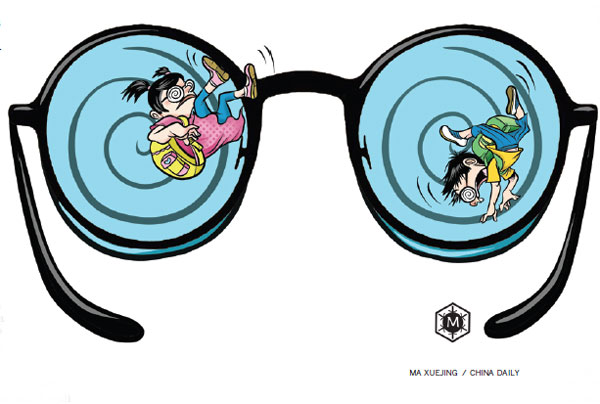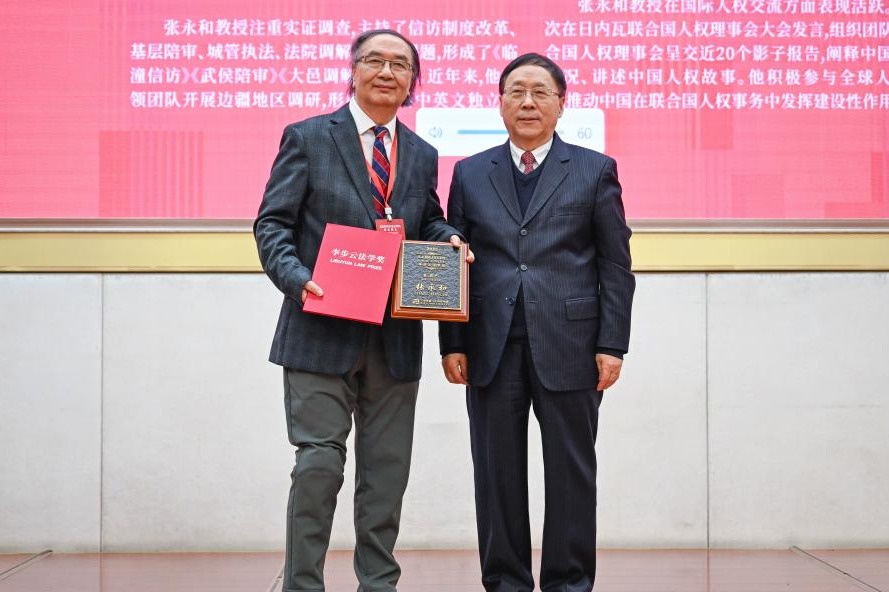Late childbearing of father raises probability of high myopia


A research team of Wenzhou Medical University found that the incidence of high myopia at the time of birth is positively related to the parents' reproductive age.
The team, led by Qu Jia and Jin Zibing, found a novel gene BSG in children with high myopia, and published the result in the Proceedings of the National Academy of Sciences (PNAS) of the United States of America. The findings have also been selected as China's Top Ten advances in Pharmaceutical & Biotechnology in 2017.
Professor Jin Zibing said, "We draw such a conclusion by collecting a large number of samples. Children have an increased probability of developing high myopia-up to a maximum of 50%- if their fathers are older than 35 years of age at the time of their births, even if both of their parents bear no genes for high myopia at all."
High myopia is the main cause of blindness in China, and its pathogenesis is difficult to study, and the prevention and control of high myopia is facing many challenges.
As the main myopia research base in the world, the Eye Hospital of Wenzhou Medical University and the State Key Laboratory of Ophthalmology, Optometry and Vision Science have focused on myopia research for a long time. Qu Jia and Jin Zibing led the research team to identify a new cause of high myopia gene BSG through a large sample. They verified the pathogenicity of BSG mutation by expanding population screening and gene knockout mouse model, and clarified the pathogenicity mechanism through mouse model of gene mutation that could cause elongated axial length.
The expression of BSG in ciliary body and neuroretina suggests that the target tissue of this kind of high myopia, that is, target tissue, lays a genetic foundation for the prevention and control of high myopia. This is the first gene mutation after verification of gene knock in mouse model of myopia, and has caused great concern in the world. The findings also indicate a new era in the pathogenesis, prevention and control of early onset high myopia.
- HK fire: 4,510 residents in shelters as support fund reaches HK$3.6b
- Scholars, industry insiders call for a responsible, scientific, credible think tank research system
- Remains of former Chinese leader Wang Bingqian cremated
- Buddhist body urges followers not to release lifeless items into the natural environment
- Report: Average age of China's workforce nearing 40
- Renowned actress He Qing passes away at age 61




































